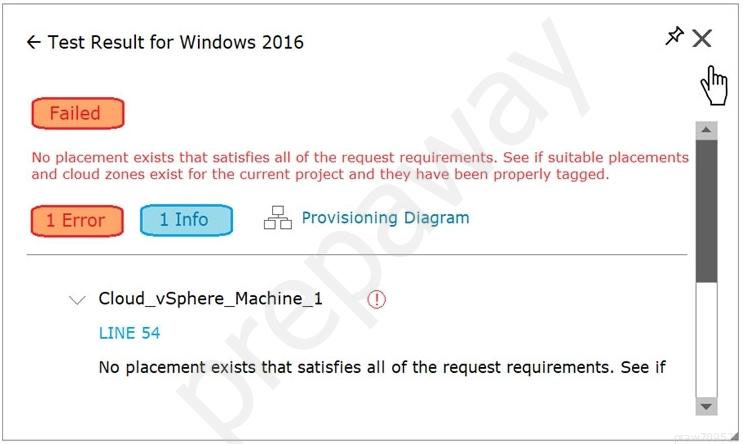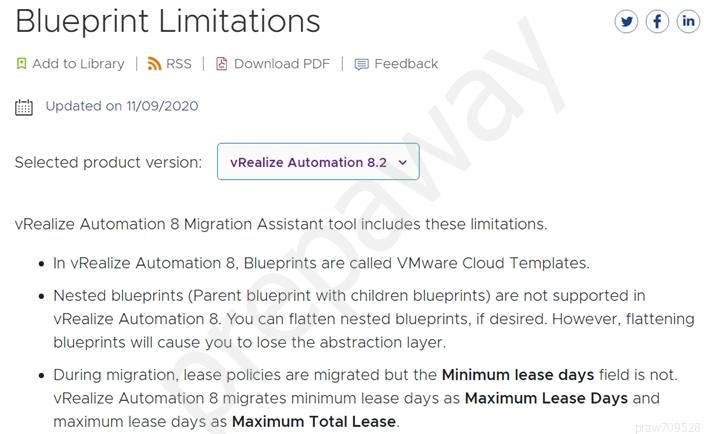Which network profile can be used to isolate a deployment? (Choose the best answer.)
A private network profile is designed to ensure that a deployment is isolated from other networks. This type of profile restricts both inbound and outbound traffic, maintaining the privacy and isolation of the deployment. Therefore, the private network profile is the most suitable option for isolating a deployment.
An administrator wants to use constraint tags to deploy cloud templates to a particular storage with a capability tag assigned; however, not all projects have access to this storage.
Which two tag formats can be defined at the cloud template level in order to ensure that cloud templates are deployed on this particular storage, whenever possible, and fail if not available? (Choose two.)
In order to ensure cloud templates are deployed on the specified storage whenever possible and fail if not available, constraint tags must be used with a 'hard' requirement. The hard requirement can be represented in two ways: with the 'hard' modifier explicitly (key:value:hard) or simply as key:value which is treated as a hard requirement by default. Hence, both key:value:hard and key:value satisfy this condition.
An administrator configures cloud accounts for vSphere, Amazon Web Services and Google Cloud Platform. Each public cloud account has a single region configured, with a single cloud zone associated with each. Company policy states that all development workloads should be deployed to the public cloud and all production workloads should be deployed to vSphere. The administrator wants to ensure that when creating cloud templates for this project an appropriate constraint tag is specified to meet the placement policy and that App-Dev users are allowed to select whether to deploy the machine to production or development.
The tagging strategy states that development environments should be tagged with `dev` and production environments should be tagged `prod`.
Which two actions should the administrator take to ensure the objective is met? (Choose two.)
To ensure that development workloads are deployed to the public cloud and production workloads are deployed to vSphere, the administrator should add a capability tag to each public cloud zone with 'env:dev' to indicate development environments, and a capability tag to each vSphere cloud zone with 'env:prod' to indicate production environments. This tagging strategy aligns with the company policy and tagging guidelines provided.
Refer to the exhibit.

An administrator is testing a newly created Windows 2016 cloud template in Cloud Assembly. While using the Test option from within the cloud template, the attached error appears.
What is a possible cause for this error message? (Choose the best answer.)
C
Reference:
https://docs.vmware.com/en/vRealize-Automation/8.2/vrealize-automation-transition/GUID-F3541BFC-E154-4E76-8845-FAF4E40632E3.html

When creating a subscription in Cloud Assembly, what are the two types of runnable items available for executing code? (Choose two.)
AE
Reference:
https://docs.vmware.com/en/vRealize-Automation/8.0/Using-and-Managing-Cloud-Assembly/GUID-CA30B6E8-0DFD-4679-84B2-
06B4D3A1CBEF.html
